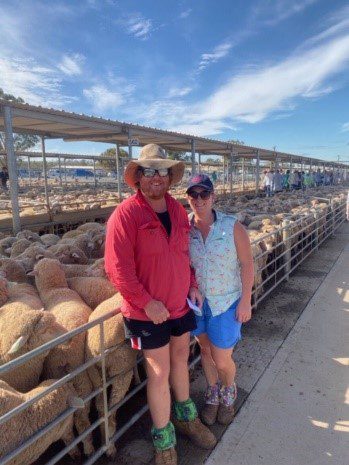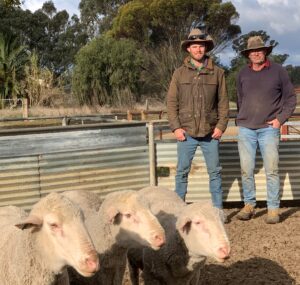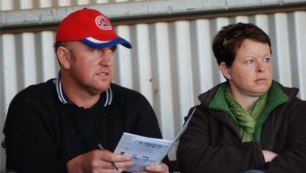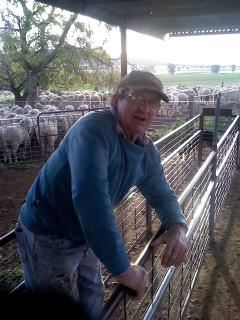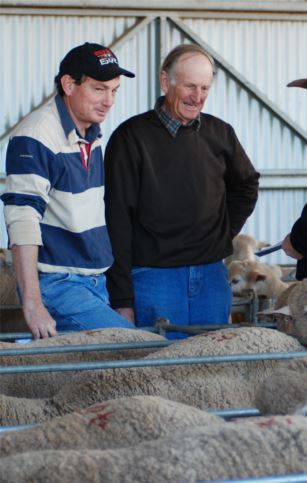Tom Briggs Testimonial
(Rutherglen, Victoria)
My Father, Colin and I farm West of Rutherglen in the North East of Victoria.
Traditionally my father and Grandfather were running first cross ewes crossed to Poll Dorset rams for prime lambs.
When I moved back to the farm, we made changes to our farming system and thought that we needed to start retaining our own ewes to keep genetics that performed under our conditions. Initially we purchased rams without data or ASBV’s, they were very good structurally. Our growth was far from desirable with the data-less genetics and the breeds that made up our composite had become very seasonal. This led to lots of questions and the need to re-adjust our strategy.
When we decided to hit reset, we were initially thinking of developing a composite that was ¾ Poll Merino, ¼ White Suffolk. We looked at the Merino, to try get rid us of as much seasonality as possible and the White Suffolk for carcass attributes. The first place I looked was on Sheep Genetics. Studs with growth were a dime a dozen in the Merino database. However, once I put in parameters around BWT, Fat, EMD, WEC, EBWR, EBCOV, LDAG, LS, ERA Trigger Vale’s Polls floated to the top and the large volume of rams at the top of the list meant we were confident that we would be able to select from a large number of rams rather than trying to find a few outliers.
Fortunately Trigger Vale also provided a one stop shop with their White Suffolks.
What I liked about the Trigger Vale White Suffolks was their relationship between birth weight and growth.
To get ahead in our breeding system we managed to source some Trigger Vale Poll Merino ewes with Trigger Vale White Suffolk lambs at foot from a Trigger Vale client. The ewes had lambed down as ewe lambs, then reconceived as hoggets. They had come from an area that suffered low rainfall and were at the bottom of their body reserves. As soon as we put feed in front of them their genetic background shone through and they regained their body condition rapidly even with lambs at foot.
After witnessing this and the plain body of these ewes, that looked identical to our old first cross and composite ewes we realised we could run a Merino ewe flock that will emulate the first cross but with a profitable fleece on her back. We have now settled on a 100% Poll Merino ewe flock with as many going to the White Suffolk for first cross fat lambs and the necessary number going to Poll Merino for ewe replacements.
For us the wool is the free lunch. We don’t have a large focus on fleece weight coming from our background, but we have slowly put more emphasis on style of wools, particularly with long staple and good fibre/crimp alignment. This style of wool has been steered toward after observing the ewes handle 463mm of rain from start of November 2021 until the end of March 2022.
The Trigger Vale Ewes suffered no fly strike or colour in the wool yet our composites, first cross and another run of non-Trigger Vale Poll Merino ewes with poor fibre alignment were relentlessly struck by flies and horrible colour in their wools by the end of summer. This may not be new news to some but staggering to watch on our end.
Along with the wool pressures of such a wet summer the worm pressure was high. We purchased some Trigger Vale clients Poll Merino wethers to capitalise on our summer forage cover crop program. Barber’s Poll were in large numbers. Running the lambs over the scales to drench it was amazing to see Trigger Vale lambs ADG from 0 grams to +120 grams, where our old blood lines were ADG 0 grams to -150 grams.
We also commonly observe the Trigger Vale Poll Merino progeny match the White Suffolks for their ADG, the only difference being the actual weight with the White Suffolks usually being a larger animal.
Our 2022 drop lambs have been sired by an entire ram team of Trigger Vale Poll Merino and White Suffolks. All ewes joined to the Merino scanned 160% ewes to the ram with a survival rate of 91%. Whilst ewes to the White Suffolks scanned 142% ewes to the ram with a survival rate of 89%, with a total flock survival of 85%.
With the abundance of summer feed available from our summer cover crop program our ewes have never gone into lambing in fatter condition. Despite their condition, all rams used this year were purchased with a range for birth, it was staggering to not lay a hand on a single ewe for dystocia and only one visible lamb death due to dystocia, where the ewe still managed to birth unassisted.
Since first contacting Andrew and Mandi and discussing the direction, we wanted to head, the type of sheep we wanted to develop, their willingness to answer any of my questions and discuss results and observations has allowed for a simple transition. All of our observations may be old news for Andrew and Mandi and long-term Trigger Vale clients but for us to watch the sheep perform on our farm has been nothing short of exciting.



